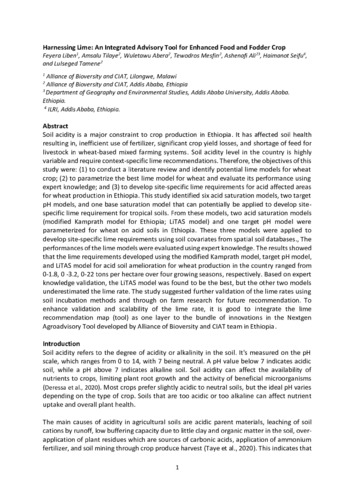Harnessing lime: An integrated advisory tool for enhanced food and fodder crop
Soil acidity is a major constraint to crop production in Ethiopia. It has affected soil health resulting in, inefficient use of fertilizer, significant crop yield losses, and shortage of feed for livestock in wheat-based mixed farming systems. Soil acidity level in the country is highly variable and require context-specific lime recommendations. Therefore, the objectives of this study were: (1) to conduct a literature review and identify potential lime models for wheat crop; (2) to parametrize the best lime model for wheat and evaluate its performance using expert knowledge; and (3) to develop site-specific lime requirements for acid affected areas for wheat production in Ethiopia. This study identified six acid saturation models, two target pH models, and one base saturation model that can potentially be applied to develop site-specific lime requirement for tropical soils. From these models, two acid saturation models (modified Kamprath model for Ethiopia; LiTAS model) and one target pH model were parameterized for wheat on acid soils in Ethiopia. These three models were applied to develop site-specific lime requirements using soil covariates from spatial soil databases., The performances of the lime models were evaluated using expert knowledge. The results showed that the lime requirements developed using the modified Kamprath model, target pH model, and LiTAS model for acid soil amelioration for wheat production in the country ranged from 0-1.8, 0 -3.2, 0-22 tons per hectare over four growing seasons, respectively. Based on expert knowledge validation, the LiTAS model was found to be the best, but the other two models underestimated the lime rate. The study suggested further validation of the lime rates using soil incubation methods and through on farm research for future recommendation. To enhance validation and scalability of the lime rate, it is good to integrate the lime recommendation map (tool) as one layer to the bundle of innovations in the Nextgen Agroadvisory Tool developed by Alliance of Bioversity and CIAT team in Ethiopia.

